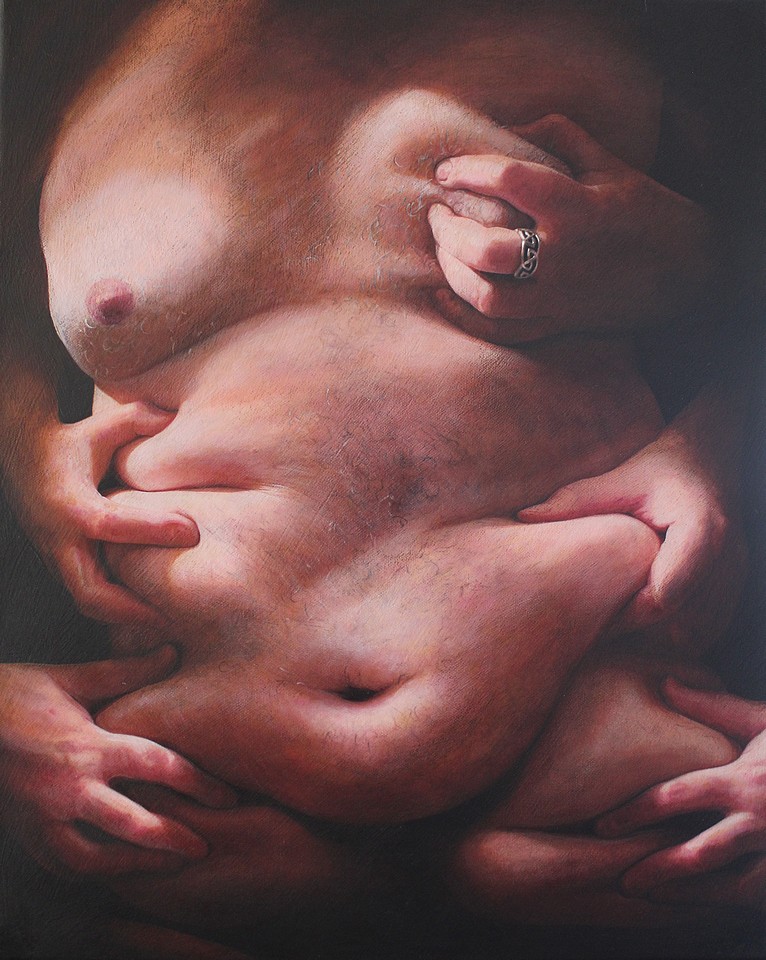
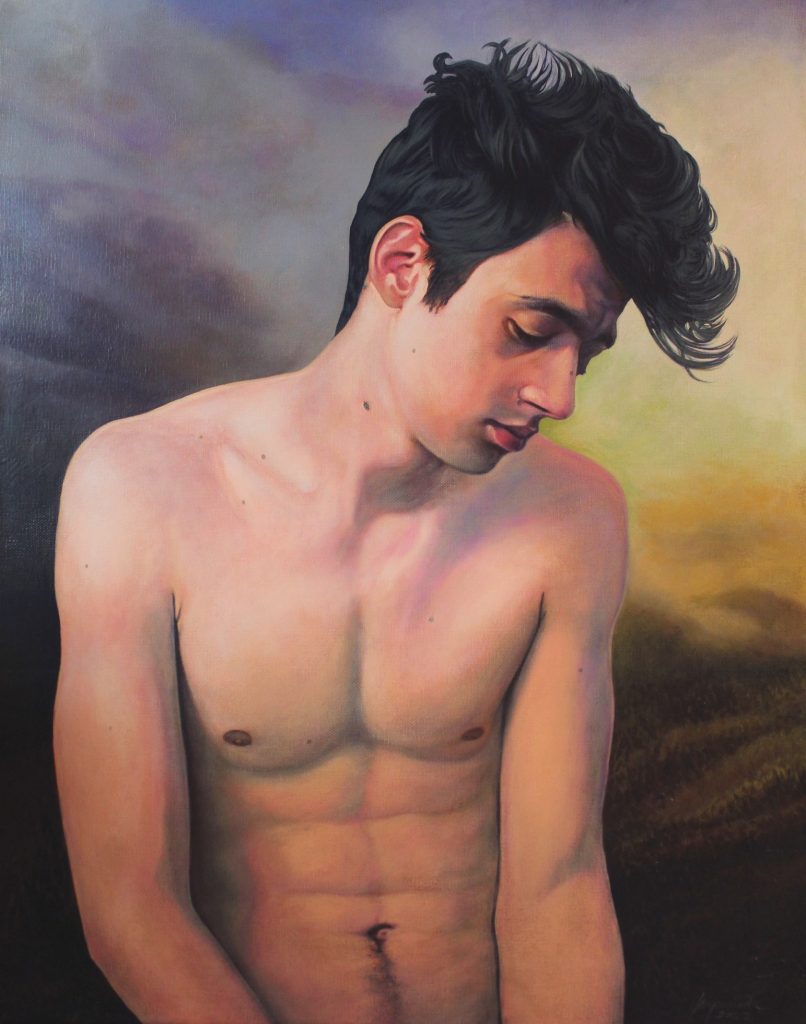
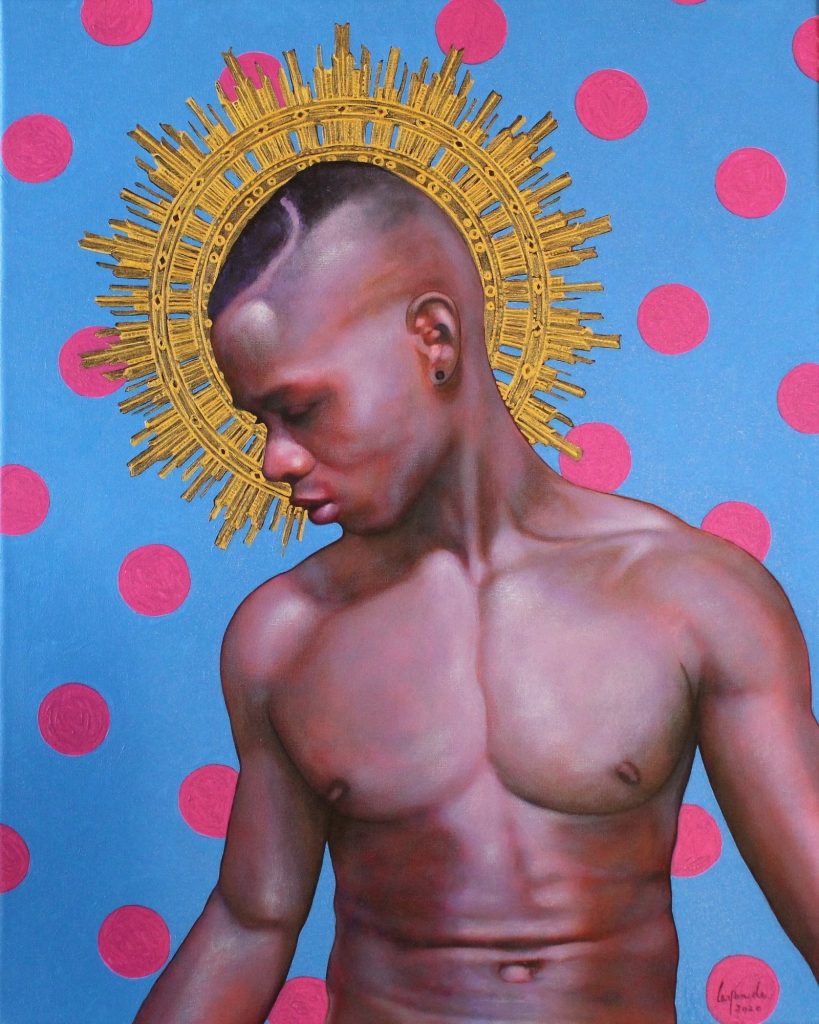
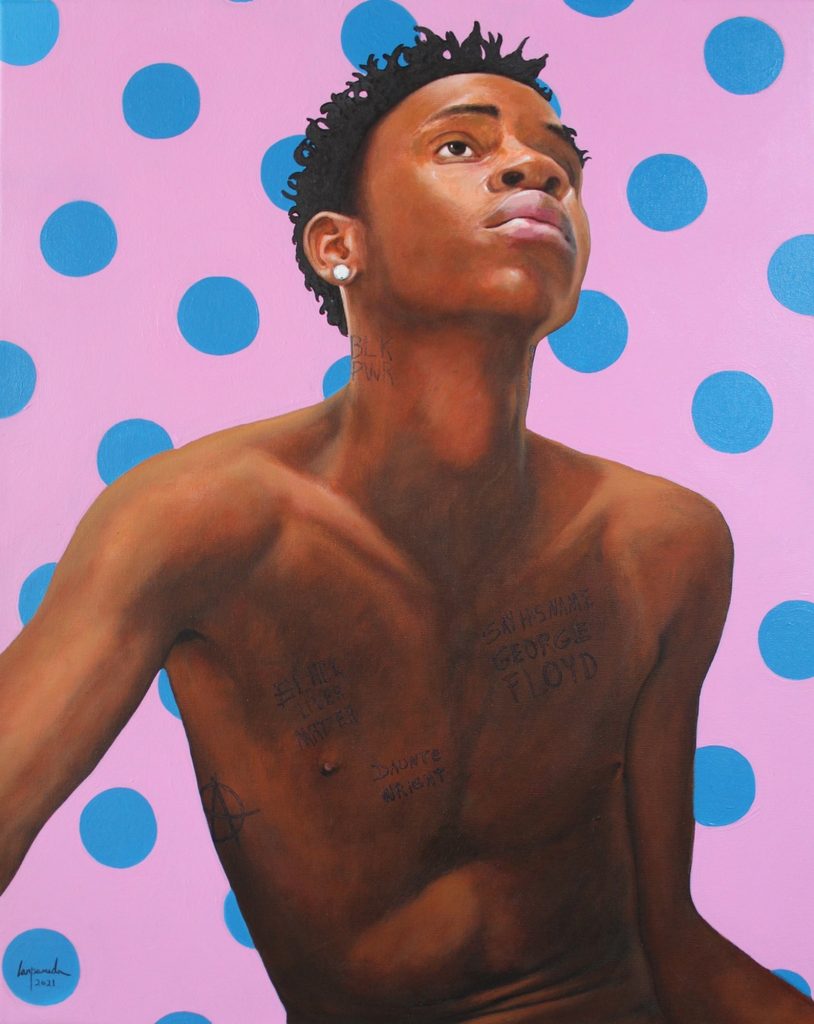
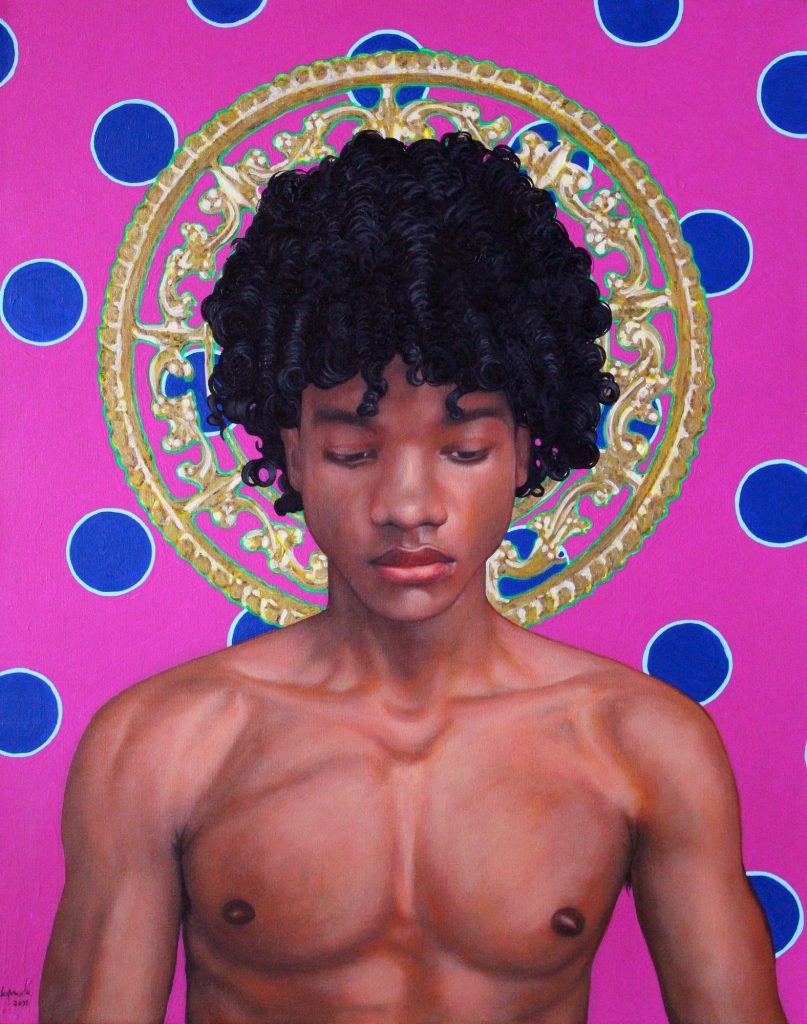
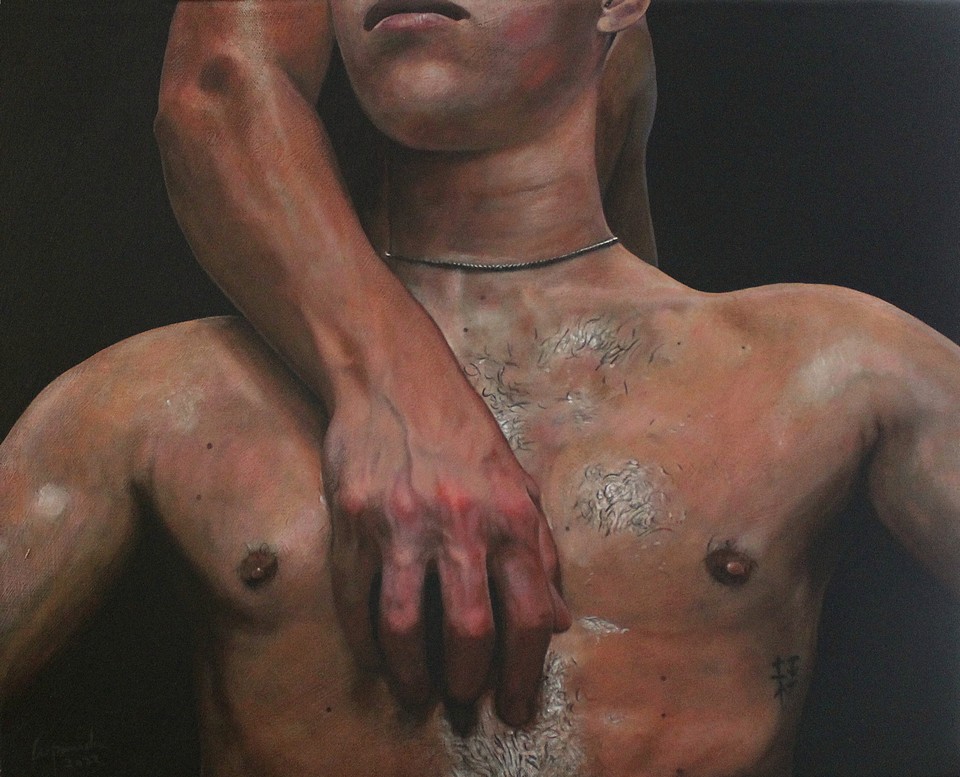
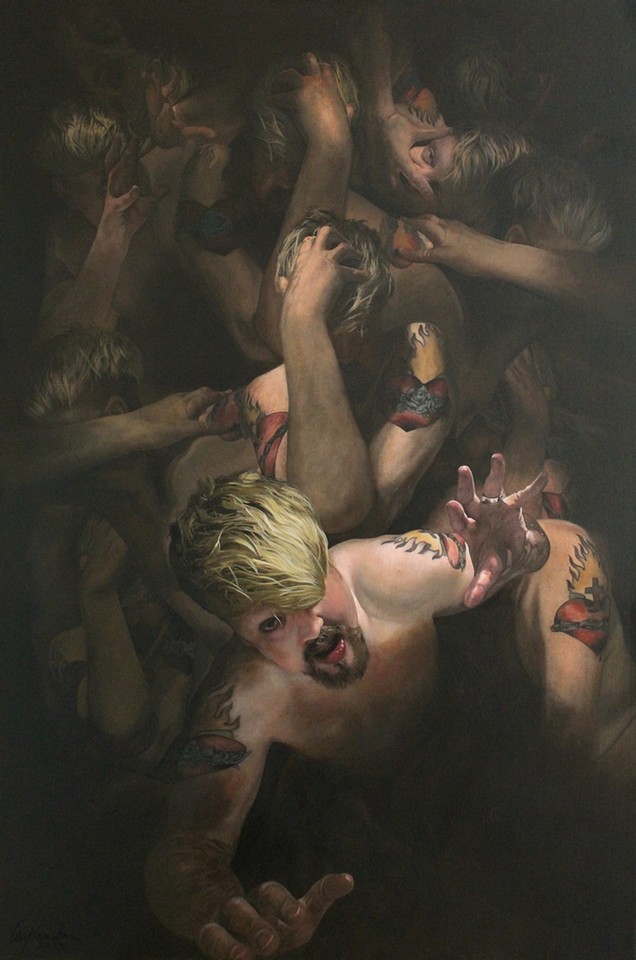
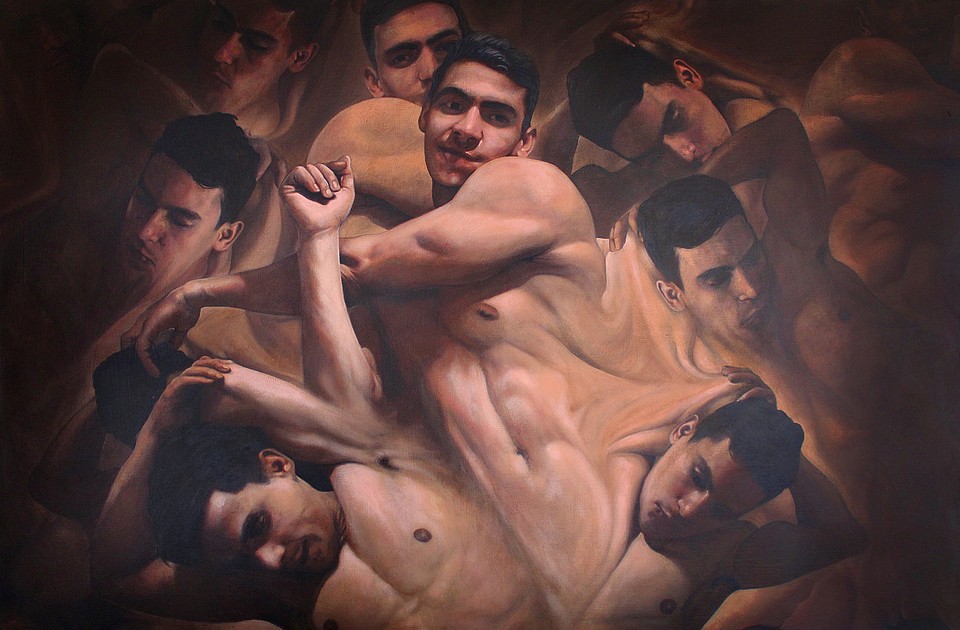
Fernando Carpaneda has been creating sculptures and paintings within the punk and homoerotic genres since the 1980s. His voracious involvement in the cause of diversity and punk culture led him to exhibit at: the CBGB art gallery, The Heckscher Museum of Art, The Tom of Finland Foundation, The Leslie Lohman Museum of Art, and on the LED panels in Times Square, New York. Carpaneda also created illustrations for The Best of Punk Globe Magazine: a book that brings together interviews with Debbie Harry, Boy George, Jamie Oliver (UK SUBS), Earl Slick, John Lydon, The Adicts, Glen Matlock, Joe Dallesandro. Carpaneda’s works were published in the book Treasures Of Gay Art, by the Leslie Lohman Museum of Art, alongside Andy Warhol, Robert Mapplethorpe and Keith Haring. Recently, the artist made it two in a row returning to the Long Island Biennial.
From Fernando Carpaneda:
I come from an Italian family but I was born in Brazil. I had my first exhibition of paintings at the age of 13, in the early ‘80s in Brasilia: the capital of Brazil. I came to New York City by chance. In the late ‘90s, I met “Dumpster”, an American Crust Punk who was on vacation in Brazil. We became friends and I ended up moving to New York and living in the C-Squat on Avenue – C.
C-Squat and CBGB were two very important influences on the creative process of my works. My work has always illustrated the Underground scene, the Punk scene, and the LGBTQIA+ scene. In early 1995, I got in touch with CBGB, and ended up scheduling some exhibitions at CB’s 313 Gallery. A few years later the gallery invited me to participate in an exhibition called “Back to the Bowery”. That brought together some of the remaining artists from Andy Warhol’s famous The Factory, as well as new artists who portrayed the city’s underground scene.
It was a historic exhibition, and where I met Billy Name (He created the design for The Factory, Andy Warhol Superstars, and was Warhol’s photographer) as well as several other artists from the ‘70s. I ended up becoming friends with Billy Name and we stayed in touch until his death in 2016. The CBGB exhibitions definitely opened several doors for me on the city’s art circuit, and it was a turning point in my international career. It was also at CBGB that I met Arturo Vega, we became friends and we stayed in touch until his death in 2013. Arturo invited me to participate in an exhibition called The Bowery Electric Festival (A Tribute to Joey Ramone) with Dee Dee Ramone paintings. I will be forever grateful to have participated in those celebrated exhibitions.
My style has grown through experience across several mediums for decades. I work with sculptures, paintings, and drawings. I try to show in my works: relevant social taboos, often dense, linked to the punk/underground universe or to LGBTQIA+ contexts. My works talk about exclusion, belonging, racial, gender, social discrimination, and anti-fascism, especially at this moment. In a world of exclusion, art for me generates dialogue. It doesn’t matter who you are, how old you are, or how innovative you are in society. I highlight ordinary people, natural and real bodies and this brings people closer to my work and, consequently, to ourselves.
Interview with artist Fernando Carpaneda
Carpazine: How did you end up on Long Island? Tell us a little about your early career and the influences that led you to where you are today.
FC: I come from an Italian family but I was born in Brazil. I had my first exhibition of paintings at the age of 13 in the early 80’s in Brasilia: the capital of Brazil. I came to Long Island by chance. At one of the first exhibitions I did in New York, I met an artist who invited me to visit his studio on Long Island, and I ended up moving there. My work has always portrayed the underground scene, the punk scene, and the LGBTQIA scene. In early 1995, I got in touch with CBGB, and ended up scheduling some exhibitions at CB’s 313 Gallery, which was the CBGB art gallery. At that time, the gallery organized an exhibition called “Back to the Bowery” which brought together some of the remaining artists from Andy Warhol’s famous The Factory, as well as new artists who portrayed the city’s underground scene. It was a historic exhibition, and where I met Billy Name (He created the design for The Factory, Andy Warhol Superstars, and was Warhol’s photographer) as well as several other artists from the 70’s. I ended up becoming friends with Billy Name and we stayed in touch until his death in 2016. Various artists from The Factory, like Lou Reed, Candy Darling, and Joe Dallesandro lived here on Long Island in the 60’s and 70’s. I think Joe Dallesandro was living in Babylon at that time. The CBGB exhibition definitely opened several doors for me on the city’s art circuit, and it was a turning point in my international career.
Carpazine: You had an exhibition of your work in Times Square, right? How was that exhibition?
FC: I exhibited paintings in Times Square. The paintings were portraits of friends and acquaintances, my own superstars. The works were shown on giant bright LED screens and were displayed on the screens of NASDAQ, Thomson Reuters, Clear Channel Spectacolor, and A2a MEDIA’s Port Authority. The opening of the event was attended by singer Twin Shadow, DJ’s AndrewAndrew, and musician Questlove from the band The Roots. The host of the night was Jimmy Fallon of NBC’s Late Night show and the event was organized by Art Takes Times Square. It was a unique experience.
Carpazine: How was it to have your sculptures in the film The Nearest Human Being?
FC: It was a fantastic experience to see my sculptures in director Marco Coppola’s film. It won an award for best feature at the Manhattan Film Festival, and it is incredible. While filming, my friend: actor Robert W. Smith, made the connection between me and director Marco Coppola. The director liked my work, and he included my sculptures in the movie. Also, it was great to meet Charlie Hofheimer. I met him by accident when I arrived to leave my sculpture on the film set. So, I saw this guy there, and said, “Hi, how are you?” and shook his hand and talked to him a little bit. It was only after that that I realized it was Charlie Hofheimer. LOL. He was very cool. Charlie is in two of my favorite films. Black Hawk Down and The Village. I was happy to meet him.
Carpazine: How do you view the reactions from the conservative part of society in relation to artistic manifestations in the contemporary world and issues such as sexuality and discrimination?
FC: Art aims to promote freedom of expression and knowledge, however, not everyone has the knowledge and sensitivity to understand or discuss the subject. Conservatism and lack of information are recurrent. Our society is formed by people with different realities and lifestyles and we have no right to compel people to follow our reality, just as no one has the right to impose theirs on us. Human sexuality is complex and it is not up to anyone to judge it. I know people who have been sexually abused by pastors, priests, and family members and they obviously don’t see the world the same way I do – If an artist’s sexuality bothers you, think twice before criticizing or discriminating against it , because not everyone has had the same life as you.
Carpazine: Can you tell me a little about the Long Island biennial?
FC: The Long Island Biennial, is an exhibition held by the Heckscher Museum of Art, and had his first edition in 2010. The Long Island Biennial offers professional artists a unique opportunity to share their work through a prestigious exhibition and offers a unique space for visitors. This year the museum celebrates its 100th anniversary, and the proposal of the biennial on this occasion was aimed at showing contemporary artists residing on Long Island. For the first time, most artists will exhibit two or three works of art, presenting visitors with a more complete picture of their most recent works. I thought it was incredible to have been selected, and I think it is a positive point for my work, in such a unique moment in which we live. At a time when minorities are persecuted, I think it is a victory to participate in this exhibition.
Carpazine: Tell me about your sculptures, you did some reinterpretations with classic art scenes. What was your inspiration to reinterpret Rodin’s sculpture (The Age of Bronze)?
FC: I always loved Rodin’s sculptures, and I always thought of making a hyper-realistic version of one of his works and I ended up being inspired by the work The Age of Bronze. My version was inspired by Keanu Reeves. I turned him into Punk Rodin. I have always loved Keanu Reeves, I like his character, his personality, and attitude as a person. I was inspired by a phase in his movie My Own Private Idaho which is one of my favorites. Eroticism for me is something natural and I show that in my works.
Carpazine: How do you see the role of tattoos in Punk Rodin?
FC: Some tattoos on Punk Rodin sculpture refer to the relationship between Rodin and Camile Claudel.
Carpazine: Homoerotic Art has always been part of the underground in the 20th century, recently it started to boom and to be part of the mainstream. How do you see this interaction between amateurs and queer art? Not all nude is art … or is it?
FC: I think that interaction and the boom in homoerotic material is happening in the same proportion as the boom that abstract, geometric or conceptual painting had. At the beginning of these movements, they also suffered from the interaction of amateurs with contemporary art … not all contemporary art work is art … or is it?
